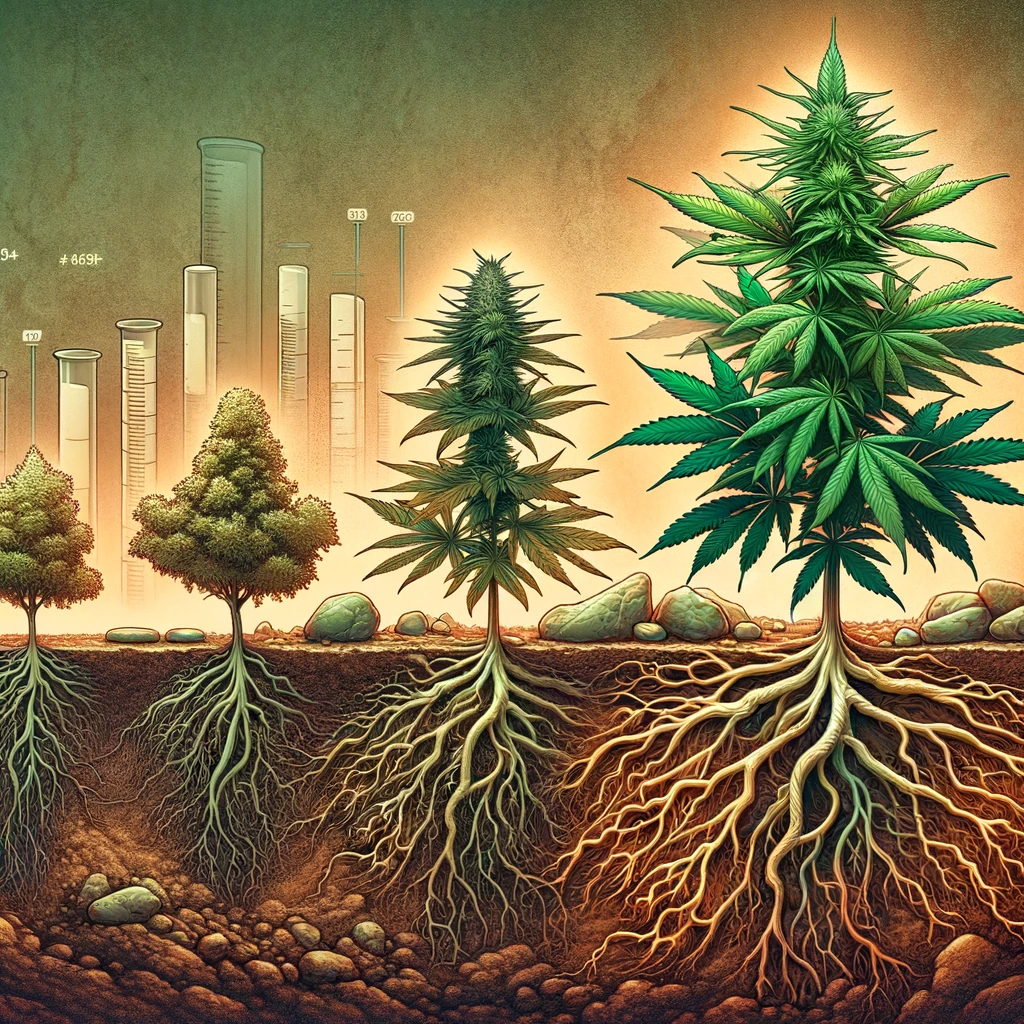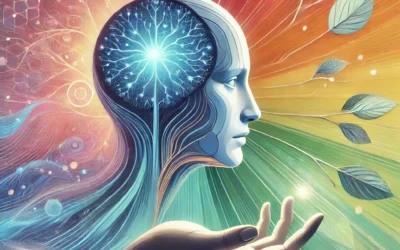Cannabis in Psychedelic Therapy: Exploring the Healing Potential
Throughout human history, the pursuit of healing and self-awareness has been a constant endeavor. From ancient indigenous rituals to modern psychotherapy sessions, humanity has always sought ways to navigate the complexities of the mind and spirit. Today, at the crossroads of tradition and innovation, a new therapeutic modality is emerging: Cannabis in Psychedelic Therapy.
While many associate cannabis with recreational use and escaping reality, this limited perspective overlooks its profound depth and potential. When approached with intention and respect, cannabis can be a powerful ally in the journey of self-discovery and healing. It offers more than fleeting euphoria; it has the ability to unlock doors of perception.
In our modern world, characterized by a relentless pace and numerous distractions, individuals often feel disconnected, anxious, and adrift. Symptoms of this disconnection are evident: pervasive dissatisfaction, a yearning for purpose, and an inner void that material gains fail to fill. In such a landscape, the allure of quick fixes and superficial solutions is strong. However, true healing, as Restore Tranquility believes, is multi-dimensional. It goes beyond alleviating symptoms to address root causes, peel back layers of conditioning, and rediscover one’s true essence.
Cannabis’s role in modern psychedelic therapy offers a fresh perspective, an avenue that is often overlooked. It goes “beyond the high” and harnesses the plant’s unique properties to facilitate deep exploration, introspection, and transformation. This article aims to shed light on this emerging field, debunk myths, and highlight the transformative potential of Cannabis Assisted Psychedelic Therapy.
As we delve deeper into this topic, we invite readers to approach it with an open mind and heart. Whether you’re a seasoned meditator, a yoga enthusiast, or someone simply seeking clarity and purpose in life, this exploration promises insights that might reshape your understanding of healing, cannabis, and the very nature of self-awareness.


The Foundations of Psychedelic Therapy
The journey of self-awareness and healing is as old as humanity itself. Throughout history, various tools and modalities have been used to facilitate this journey, and psychedelic substances are among the most potent and transformative. In this section, we will explore the origins, potential, and lessons learned from the historical use of psychedelic therapy.
2.1. What is Psychedelic Therapy?
Psychedelic therapy refers to the therapeutic use of psychedelic substances in a controlled and guided environment. Its purpose is to facilitate deep introspection, emotional release, and profound personal insights. Unlike recreational use, which focuses on the sensory and perceptual effects, psychedelic therapy aims to harness the healing and transformative power of psychedelics when used intentionally and with guidance.
2.2. Types of Psychedelics and Their Effects
Several psychedelic drugs have been studied for their therapeutic potential. Here are a few examples:
- LSD (Lysergic acid diethylamide): Known for its potent psychoactive effects, LSD has shown potential in treating conditions such as anxiety and depression.
- Psilocybin: Found in certain mushrooms, psilocybin has shown promise in treating addiction and end-of-life anxiety.
- Ayahuasca: A traditional brew used by indigenous cultures in the Amazon, ayahuasca has been studied for its potential therapeutic effects, particularly in addressing addiction and trauma.
Each substance interacts with the brain in unique ways, amplifying emotions, altering perceptions, and facilitating a deep sense of connection to oneself and the world.
2.3. Contexts and Indications for Use
Psychedelic therapy is not a one-size-fits-all solution. Its effectiveness depends on the context in which it is used and the specific indications. As the referenced article highlights:
- Depression: Psychedelics, particularly psilocybin, have shown promise in treating depression, offering relief when traditional treatments have failed.
- Anxiety: Psychedelics have been used to alleviate end-of-life anxiety, providing a sense of peace and acceptance, especially in individuals with terminal illnesses.
- Addiction: From alcoholism to nicotine addiction, psychedelics have been explored as tools to address underlying emotional and psychological triggers and break the chains of addiction.
- PTSD: Psychedelics offer hope for individuals with post-traumatic stress disorder by facilitating the processing and integration of traumatic memories.
2.4. Historical Lessons from Psychedelic Use
The use of psychedelics is not a new phenomenon. Indigenous cultures have revered these substances for their spiritual and healing properties, while the counterculture movement of the 1960s popularized their recreational use. However, this led to backlash and eventual criminalization. This historical context reminds us of the importance of responsible and intentional use, respecting the power and potential of these substances.
2.5. Potential Risks and Their Management
Like any therapeutic modality, psychedelic therapy carries risks. The article discusses potential adverse psychological reactions, such as heightened anxiety or triggering latent psychological conditions. There is also a risk of drug abuse. However, with appropriate dosages, guided sessions, and psychological support, these risks can be managed, ensuring a safe and transformative experience for individuals.


Cannabis: Not Just a Recreational Substance
Plants have played a significant role in our biological and cultural evolution. Among these plants, cannabis stands out as one of the most versatile and misunderstood. While popular culture often portrays cannabis as solely a recreational substance, its history is much more complex, with ties to ancient rituals, medicinal practices, and spiritual experiences. As we explore the multifaceted world of cannabis, it becomes clear that its potential reaches far beyond the stereotypical “high.”
3.1. A Historical Perspective on Cannabis
Long before cannabis became associated with the counterculture movements of the 20th century, it held a revered place in various ancient civilizations. From the sacred rituals of the Vedic traditions in India to its medicinal use in ancient China, cannabis has been recognized for its therapeutic and spiritual properties for millennia. These ancient cultures were not seeking recreational escape but rather accessing the plant’s profound ability to heal, connect, and elevate the human experience.
3.2. The Multifaceted Benefits of Cannabis
In addition to its recreational appeal, cannabis offers a wide range of benefits that promote holistic well-being:
Physical Healing: Cannabis is known for its analgesic properties, providing relief from chronic pain, inflammation, and other ailments. It can be particularly helpful for conditions such as arthritis or migraines.
Mental Well-being: Beyond its immediate euphoric effects, cannabis can act as an anxiolytic, alleviating symptoms of anxiety and depression. It also enhances introspection, aiding in the processing of suppressed emotions and traumas.
Spiritual Connection: For those seeking spiritual experiences, cannabis can serve as a tool for deep meditation, facilitating a connection with the higher self and the universe.
3.3. Cannabis’s Unique Properties in Therapy
Cannabis’s therapeutic potential stems not only from its individual compounds but also from the synergy of its various components. This synergy, known as the entourage effect, amplifies its therapeutic benefits, making it a unique choice for therapeutic settings:
Enhanced Introspection: In a guided environment, cannabis can facilitate deep introspection, allowing individuals to confront and process suppressed emotions, traumas, and limiting beliefs.
Sensory Amplification: Cannabis can heighten sensory perceptions, making practices like meditation, breathwork, and even psychotherapy more profound and transformative.
Emotional Fluidity: By reducing inhibitions and defense mechanisms, cannabis can aid in emotional release, enabling individuals to process and heal from past traumas.
3.4. Moving Beyond Stereotypes
For those who are not familiar with it, it may be easy to dismiss cannabis as just a recreational drug. However, we believe true healing is multi-dimensional. By limiting cannabis to being seen solely as a recreational substance, we run the risk of overlooking its profound potential to support mental, physical, and spiritual healing. As we embark on a journey towards self-actualization and holistic well-being, it is crucial to approach cannabis with an open mind and recognize its potential as a therapeutic ally.


Cannabis Assisted Psychedelic Therapy: A New Frontier
The fusion of ancient wisdom with modern techniques often leads to groundbreaking discoveries. Cannabis Assisted Psychedelic Therapy (CAPT) stands at this intersection, offering a transformative approach that combines the profound properties of cannabis with the deep introspective potential of psychedelic therapy. As we venture into this new frontier, it is essential to understand the nuances, potential, and transformative power of CAPT.
4.1. The Genesis of CAPT
While both cannabis and psychedelics have ancient roots, their combined therapeutic application is a relatively recent development. The genesis of CAPT lies in the recognition that cannabis, when used intentionally within a therapeutic framework, can amplify the introspective and healing properties of psychedelic experiences. It is not about intensifying the “trip,” but about deepening the journey into the self.
4.2. The Mechanism Behind CAPT
At its core, CAPT leverages the unique properties of cannabis to enhance the therapeutic potential of psychedelic sessions:
- Setting the Stage: Cannabis acts as a primer, preparing the mind for deep introspection. It softens the mental barriers, making individuals more receptive to the therapeutic process.
- Amplifying Introspection: The introspective properties of cannabis can lead to profound insights, allowing individuals to confront and process deep-seated traumas, beliefs, and emotions.
- Facilitating Emotional Release: Cannabis’s ability to enhance emotional fluidity can be particularly beneficial in CAPT, allowing for a cathartic release of suppressed emotions.
4.3. The Transformative Potential of CAPT
The true power of CAPT lies in its transformative potential. While traditional therapies often focus on symptom alleviation, CAPT aims for deep-rooted healing:
- Clearing the Lens: Healing involves clearing away the mud from the lenses through which we perceive ourselves and the world. CAPT facilitates this by allowing individuals to confront and dismantle limiting beliefs and narratives.
- Reconnecting with the Self: In the hustle and bustle of modern life, many feel disconnected from their true essence. CAPT offers a pathway back to the self, fostering a deep sense of connection and belonging.
- Awakening the Creator Within: At our core, we are all creators, shaping our realities with our beliefs, actions, and perceptions. CAPT empowers individuals to reclaim this creative power, enabling them to craft a life aligned with their true purpose.
4.4. Navigating the Challenges
Like any therapeutic modality, CAPT is not without its challenges. Cannabis Assisted Psychedelic Therapy can be intense, and not everyone may be prepared for the depth of introspection it can facilitate. It is essential to approach CAPT with an open heart, guided by experienced therapists who can navigate the intricacies of this modality.
4.5. The Future of CAPT
As we stand on the cusp of a therapeutic revolution, the potential of CAPT is only beginning to be realized. With continued research, training, and awareness, CAPT could redefine the way we approach mental, emotional, and spiritual well-being. It offers a promise, not just of symptom relief, but of deep-rooted transformation, awakening individuals to their true potential and purpose.


Conclusion
As we explore the diverse world of healing modalities, it becomes clear that our journey towards well-being is multidimensional rather than linear. The emergence of Cannabis Assisted Psychedelic Therapy (CAPT) exemplifies humanity’s unwavering pursuit of holistic healing, combining ancient wisdom with modern therapeutic practices. This fusion not only provides a fresh perspective on mental, emotional, and spiritual well-being, but also challenges our preconceived notions about cannabis and its role in therapy.
The transformative potential of CAPT lies not only in its ability to alleviate symptoms, but also in its capacity to facilitate profound healing. As we have observed, it involves clearing the lens through which we perceive ourselves and the world, reconnecting with our true essence, and awakening the innate creator within each of us. In a world filled with distractions, anxieties, and superficial solutions, CAPT offers a guiding light, leading individuals towards clarity, purpose, and genuine self-awareness.
Referring to the article titled “Psychedelic medicine: a re-emerging therapeutic paradigm” source, it is worth noting that “the potential benefits of psychedelic medicine, particularly when combined with therapy, are starting to gain recognition from mainstream psychiatry.” This acknowledgment from the broader medical community underscores the significance and potential of CAPT and similar therapeutic approaches.
I believe healing is our inherent right. It is not a privilege reserved for a select few, but a natural potential within each of us. True healing occurs on multiple levels of our being. It is a harmonious dance of the mind, body, and spirit, with each facet influencing and enhancing the others. CAPT, with its unique blend of cannabis and psychedelic therapy, offers a pathway to this harmonious dance, ushering in a new era of holistic well-being.





0 Comments